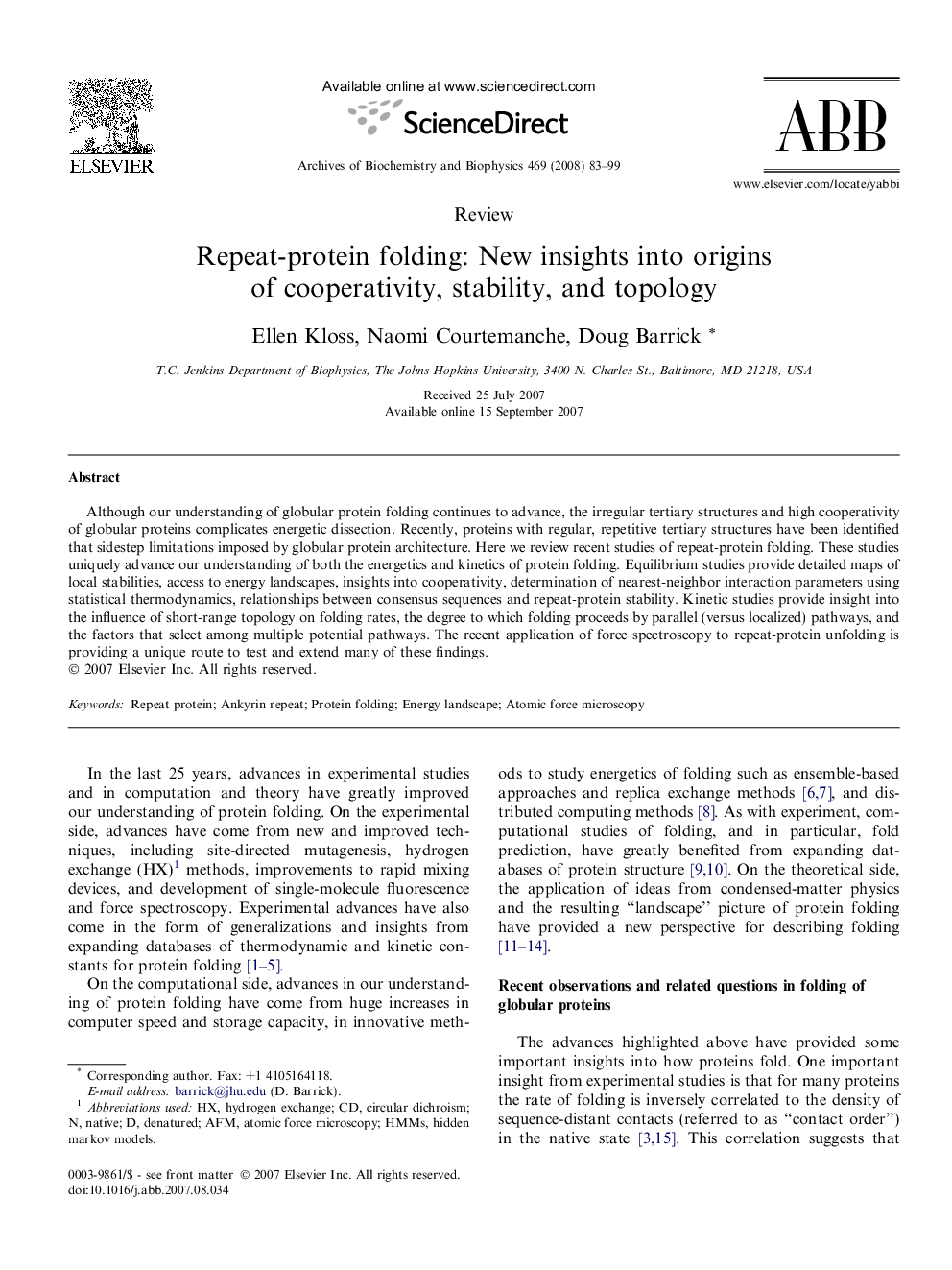| Article ID | Journal | Published Year | Pages | File Type |
|---|---|---|---|---|
| 8292033 | Archives of Biochemistry and Biophysics | 2008 | 17 Pages |
Abstract
Although our understanding of globular protein folding continues to advance, the irregular tertiary structures and high cooperativity of globular proteins complicates energetic dissection. Recently, proteins with regular, repetitive tertiary structures have been identified that sidestep limitations imposed by globular protein architecture. Here we review recent studies of repeat-protein folding. These studies uniquely advance our understanding of both the energetics and kinetics of protein folding. Equilibrium studies provide detailed maps of local stabilities, access to energy landscapes, insights into cooperativity, determination of nearest-neighbor interaction parameters using statistical thermodynamics, relationships between consensus sequences and repeat-protein stability. Kinetic studies provide insight into the influence of short-range topology on folding rates, the degree to which folding proceeds by parallel (versus localized) pathways, and the factors that select among multiple potential pathways. The recent application of force spectroscopy to repeat-protein unfolding is providing a unique route to test and extend many of these findings.
Related Topics
Life Sciences
Biochemistry, Genetics and Molecular Biology
Biochemistry
Authors
Ellen Kloss, Naomi Courtemanche, Doug Barrick,
